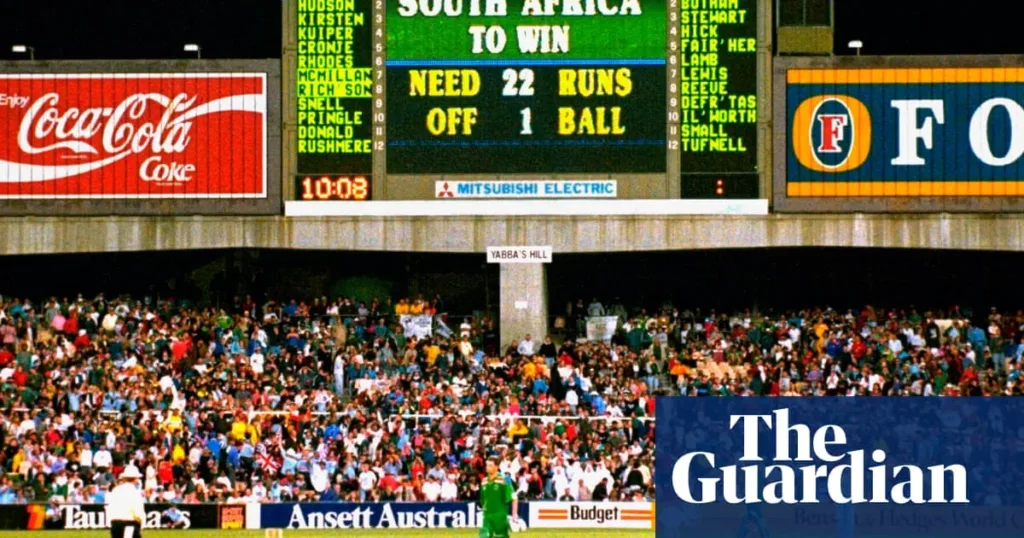Cricket’s Reckoning: South Africa’s Long Journey to the World Cup Final
It has taken 32 years for South Africa to finally secure a spot in the decider at a men’s World Cup, vanquishing the demons of a rain-affected semi-final defeat to England in 1992. The country’s cricketing journey has been marked by a series of heartbreaking semi-final exits, with the DLS method playing a pivotal role in their frustrations.
The 1992 ODI tournament saw heavy showers and a quickly discredited rain rule end South Africa’s hopes of a triumphant return to the global stage. Chasing England’s target of 253, South Africa needed 22 runs from 13 balls when rain interrupted play at the SCG. After the skies cleared, England’s two lowest-scoring overs were wiped from their total, and the recalculations reduced South Africa’s target to 21 from a single delivery – an outcome that sparked outrage.
“The DLS method, created by statisticians Frank Duckworth and Tony Lewis in the wake of that 1992 debacle, has since become the standard for limited-overs cricket matches.”
Its current custodian, Australian professor Steve Stern, believes the system is the most statistically fair, despite its complexity for the ordinary fan.
Stern, a professor of data science at Bond University, has been responsible for overseeing the DLS method since 2014, when his work was incorporated into a significant update. He emphasizes the importance of maintaining a balance between statistical accuracy and simplicity, reflecting Duckworth’s vision for the system.
As South Africa prepares to face India in the 2024 T20 World Cup final at Kensington Oval in Bridgetown, rain could once again play a role. However, the impact of the DLS method should be a far cry from the outrage witnessed 32 years ago when South Africa’s World Cup hoodoo began.
The DLS method’s evolution, including the incorporation of the “S” in DLS to represent Stern’s contributions, has aimed to keep pace with the changing dynamics of modern cricket. Stern is currently working on an annual review, but does not expect any significant changes in the near future, unless the data suggests a fundamental shift in the way the method operates.
The legacy of Duckworth and Lewis, and the continued efforts of Stern, have ensured that the DLS method remains a crucial element of limited-overs cricket, shaping the drama and excitement of the game, even if it may not always be fully understood by the casual fan.
🔗 Source
